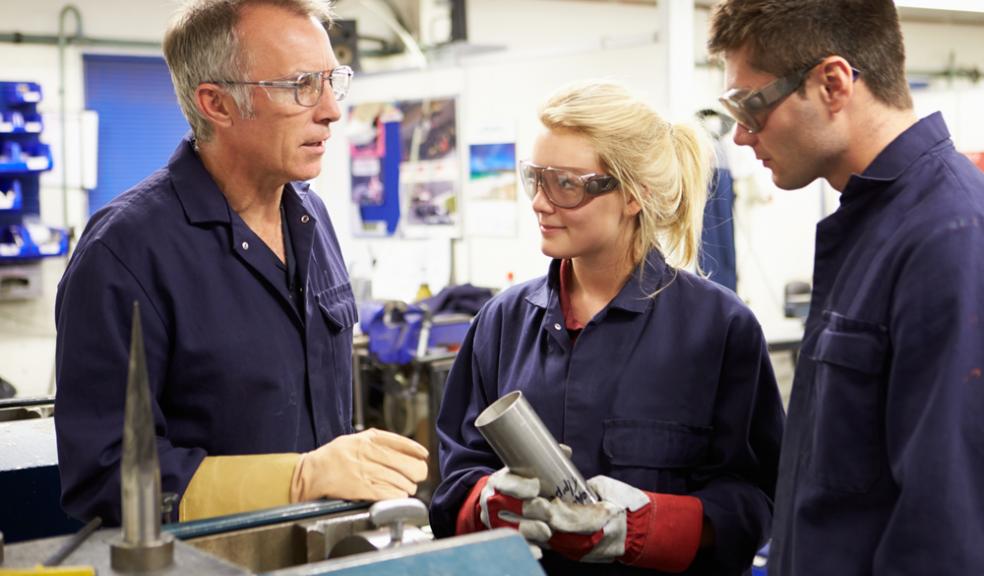
Apprenticeships contribute £3.2 billion in 2014 to the South West
New research from the Centre for Economics and Business Research (Cebr) reveals that apprenticeships will contribute around £3.2 billion to the economy of the South West in 2014.
This comes after the ‘Made by apprentices 1914 – 2014’ event yesterday on board HMS St Albans, marking 100 years of apprenticeships.
This figure includes gains to the economy from higher wages, business profits and taxes, an estimated reduction in unemployment benefit payments, and benefits to organisations while training apprentices.
The ratio of benefits to costs of apprenticeships is £21 for the national economy for each £1 of public money spent.
The South West has the highest number of participating apprentices of any region in the UK with 92,280 apprentices participating in 2012/13, around 10% of the UK total.
The number of people starting an apprenticeship each year has grown in recent years from around 100,000 in 1950 to more than 450,000 people in 2013-14, and the government is on course to deliver in excess of 2 million apprenticeships in the lifetime of this parliament.
If this upward trend in recruitment continues, the national economy stands to gain £50 billion by 2025 and £101 billion by 2050. If the number of employers taking on apprentices rises still further, these benefits could increase by £8 billion in 2050, giving a total gain of £109 billion.
Minister of State for Skills Nick Boles said:
“Today’s celebration of a hundred years of apprenticeships demonstrates how they have long played a key role in the workforce and commemorates the contribution apprentices have made to employers and the nation. Today apprenticeships are at the heart of the Government’s drive to equip people with the skills that employers need to grow and compete.”
Employers who have been delivering apprenticeships for 100 years attended an event yesterday on board HMS St Albans along with some of their apprentices. This included Princess Yachts, Babcock, Whitbread Group, and the RNLI, all of which are based in the South West.
‘Made by apprentices 1914-2014’ recognised all the employers taking part in the Centenary Apprenticeship Programme and the contribution of apprentices past and present.
The Cebr report reveals the economic benefit of apprenticeships for all parties involved - the apprentice, employer and the state:
- For every £1 that is spent on apprenticeships, the national economy gains £21. This is high in comparison to other expenditure, for example, returns on investment in the innovation, research and technology sectors range from around £4 - £7 per £1 spent.
- Apprentices are more likely to be in employment for longer, and will receive higher earnings, with wage premiums of 11% for intermediate-level apprentices, and 18% for advanced-level.
- Employers gain in the long and short term from taking on an apprentice, with the Cebr estimating increased outputs for businesses of £1.8 billion in 2012-13.
- Unemployment is reduced with £370 million gained from saved benefits per year, thanks to around 99,000 extra employed people as a result of apprenticeships.
- The most popular sectors for apprenticeships are: health and social care (13%), customer service (10%), business administration (8%) and retail and engineering (both at 7%). This is out of a total of 950,313 people participating in an apprenticeship in 2012-13.
- The region with the highest concentration of apprentices per total population is the North West, followed by regions within Northern England and the Midlands.
The Skills Funding Agency is urging employers to recognise the positive impact apprenticeships have made over the past hundred years and to consider how an apprenticeship could benefit their business in 2014 and beyond. Employers can visit www.greatbusiness.gov.uk/apprenticeships to find out more.











